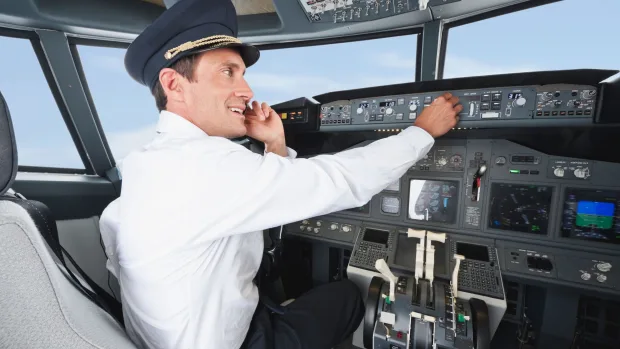When the two passengers of the first commercial flight departed from Tampa, Florida, in 1914, few would have predicted the global aviation industry to fly 6 million people a day just over a century later. In that time span, technological advancement has made flying safer than ever, but accidents remain a reality, with 80 percent of all aviation incidents caused by human error, such as communication breakdown.
Ensuring the safety of passengers and flight crews is the number one priority of airlines, ground staff and air traffic controllers alike. However, the pandemic dealt a body blow to the aviation industry, halting of the flow of goods and people worldwide, and bringing aviation’s 3.2 percent annual growth down to a decline of 46.7 percent.
Airline budgets were slashed and staff furloughed, but as lockdowns subside, and air traffic returns to pre-COVID levels, English language training should be on the wish list of airlines seeking to successfully recruit and retain talent, and ensure the safety and satisfaction of their customer base.
In-Flight Communication
Since 1951, English has been the official language of the skies, with aviation employees needing to attain an ICAO proficiency level in order to qualify for their respective jobs. A high level of spoken English allows air traffic controllers to give concise information to pilots, such as altitude and heading instructions, and for cabin crews to relay safety procedures to passengers effectively.
Especially in critical phases of flight such as take-off and landing, communication can be the decisive factor between life and death, as demonstrated in the 2013 crash of Asiana Airlines Flight 214 which crashed into a seawall while landing at San Francisco airport. The National Transportation Safety Board determined one of the causes of the crash to be the flight crew’s nonstandard communication and coordination regarding the use of autothrottle and autopilot systems.
This year so far has seen over 2,000 flights cancelled, and a further 25,000 delayed. Such occurrences can cause the foundations of employee-customer relationships to buckle.
However, the effective communication of instructions, reassurance, and, in some cases, de-escalation can be crucial components in the retention of customers and the long-term success of a carrier. Fluency in English pronunciation is important in an industry that relies on effective teamwork, and a forward-thinking airline will prioritize this when building its training program. Not only benefiting the business, language training can advance an employee’s personal growth and can be an attractive prospect for prospective candidates worldwide.
Retaining talent through training
The aviation industry is in the midst of a recruitment and retention crisis, as only 50 percent of the flight attendants who make it through training are still employed at that airline after a year.
Flight attendants particularly operate in high-stress environments and can suffer from frequent burnout, leading to a high turnover rate within the industry. English proficiency edtech that improves the pronunciation of the speaker can be a cost-effective and expeditious means of training, utilizing millions of data points to analyze speech patterns, accents and inflection.
A study found that retention rates within companies can rise by up to 50 percent with a strong learning culture, and 86 percent of millennials would be kept from quitting a job if thorough training and development were offered by an employer. For the aviation industry to reach cruising altitude, staff must be comprehensively trained in efficient communication to meet the needs of regulatory bodies and passengers alike.
At any given time, there are 500,000 passengers in the sky, and as the aviation industry gets back to its feet, Aviation English will be a necessary tool in the repertoire of flight crews and ground personnel to ensure the safety and customer satisfaction of these passengers.
For pilots and controllers, the ICAO reassesses their proficiency level every three years, compounding the need for a consistent level of attainment. People are the fuel that keeps the aviation sector airborne, and the investment in language training for employees can play a role in the revitalization of an industry desperate to regain its wings.










